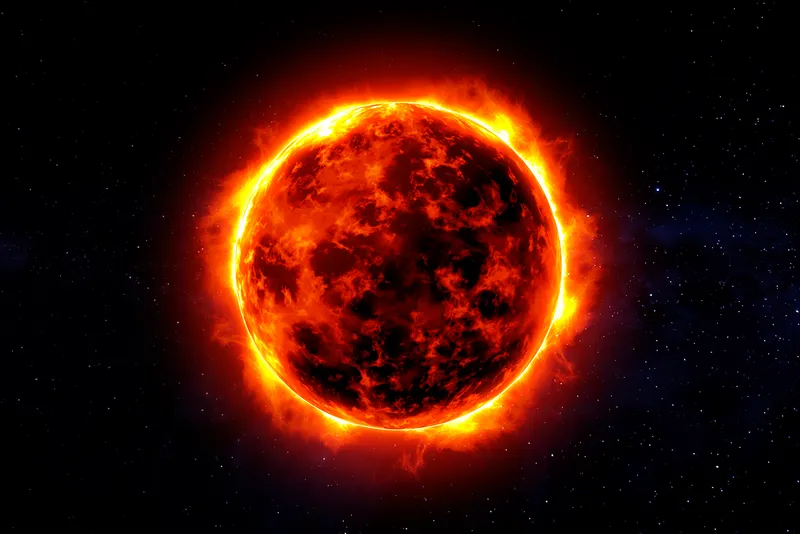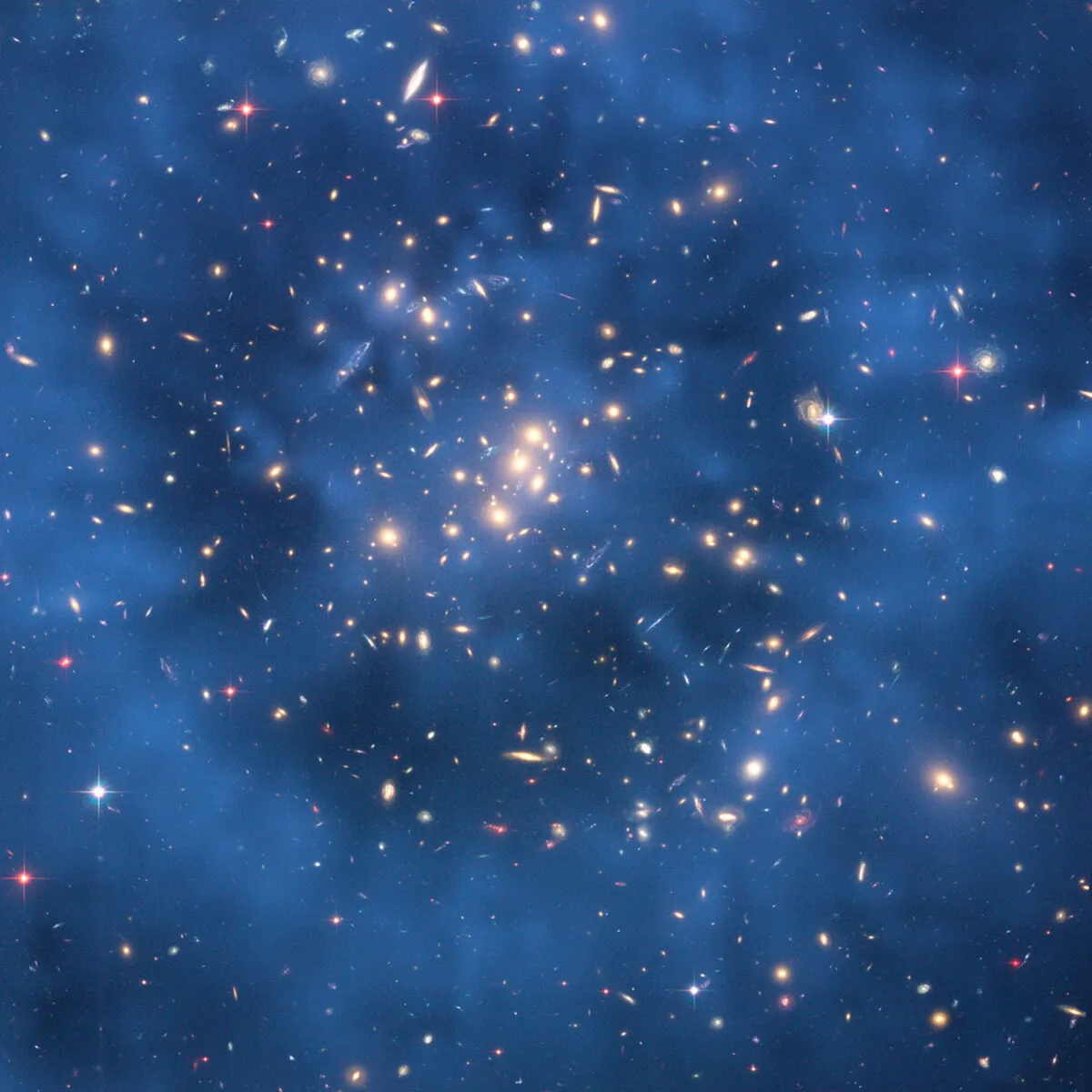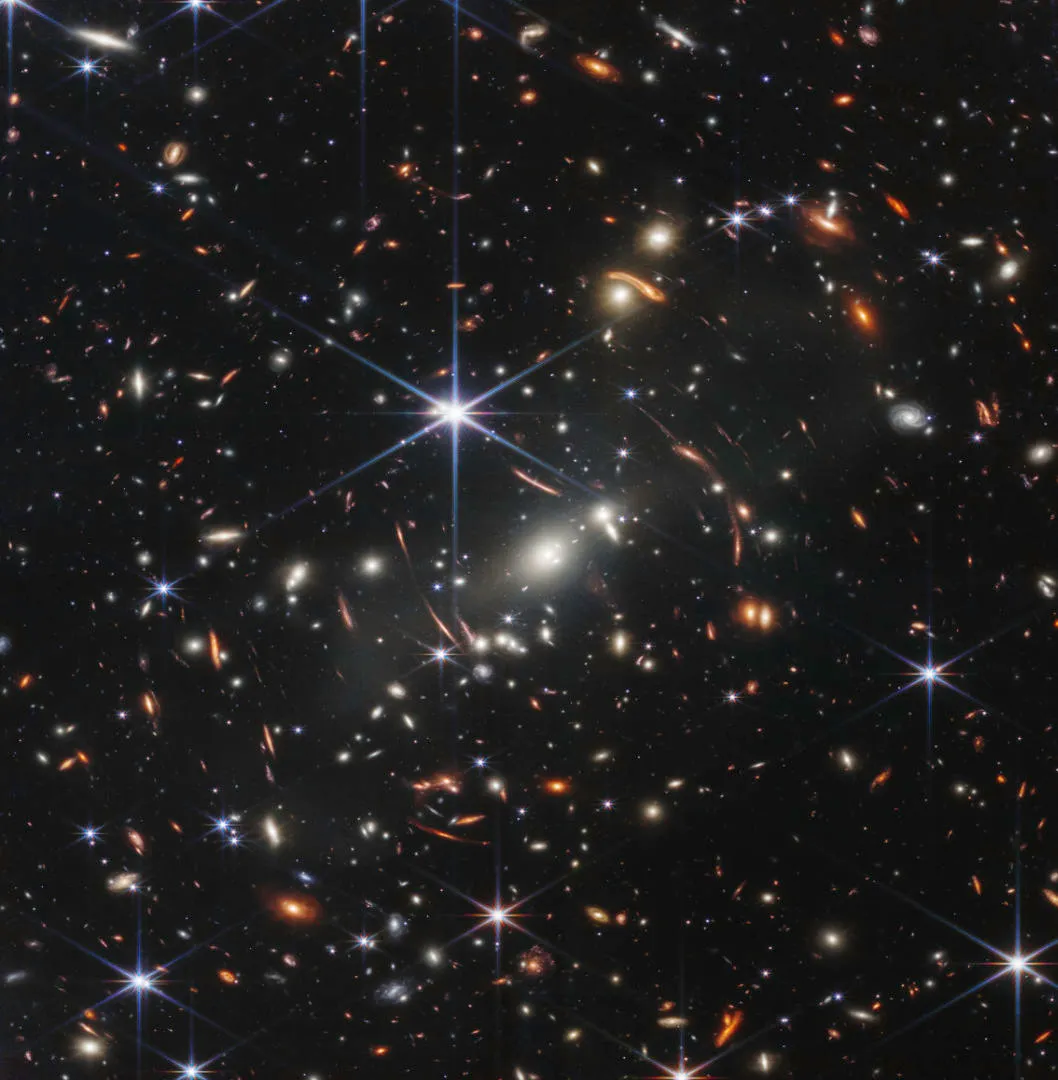Researchers examining high-redshift objects in Webb Telescope data have detected what could be dark stars from the cosmic dawn.
Dark stars are candidates for the first stars that formed in the Universe, around two hundred million years after the Big Bang.
They would be made only of hydrogen and helium from the Big Bang, but unlike stars that are powered by nuclear fusion, would be powered by dark matter.

Because there’s no fusion happening inside them, they aren’t very hot.
This means they can grow until they reach perhaps a million times the Sun’s mass and a billion times its brightness.
A single dark star from the early Universe could be as bright as an early galaxy containing many more standard stars.
Katherine Freese is the director of the Weinberg Institute for Theoretical Physics and Jeff & Gail Kodosky Endowed Chair of Physics at the University of Texas, Austin, specialising in theoretical cosmology and astroparticle physics.
We spoke to her about these dark stars, and what James Webb Space Telescope studies of them can tell us about the Universe.

Can a star be powered by dark matter?
The first stars formed in a very dark-matter-rich environment, at the centres of early proto-galaxies.
Here, clouds of hydrogen were beginning to collapse down into fusion-powered stars but sitting in a big pool of dark matter.
We figured out that after a chain of reactions, the dark matter particles could annihilate each other and end up mostly as photons and other particles.
These photons could get stuck in the collapsing gas cloud and dump all the energy previously contained in the dark matter into it.
This is a large enough source of energy to turn that collapsing cloud into a star.
They’re called dark stars because they’re powered by dark matter, though they’re not really dark at all.
And in fact, their mass is only around 0.1% dark matter.
How can a star be bright but cool?
Brightness is related to a star’s radius and temperature.
While the temperature of a dark star is cool – around the same as the surface temperature of our Sun – its radius is enormous, so it becomes very bright.
Because they are cool, it means there are not too many high-energy photons coming off their surface. If there were, then the star would stop growing and never reach the brightness of a galaxy.

What can dark stars tell us about the Universe?
Dark stars live as long as they have dark matter fuel, and that could last millions to billions of years.
But if the dark star moves away from a dark-matter-rich environment, it will start to collapse. As it collapses, it heats up.
For smaller dark stars, you may get a hot core powered by fusion.
But for big stars, around one million times as massive as the Sun, the collapse will form a black hole.
We have found huge black holes in the early Universe, a billion times the Sun’s mass, much earlier than they should have formed.
If we had many black hole ‘seeds’ weighing one million times our Sun’s mass, and they merged, then it could be possible to produce a supermassive black hole this early.
This isn’t possible with fusion-based stars.
How do you look for a dark star?
We are trying to differentiate between a dark star and an early galaxy in the James Webb Space Telescope (JWST) data.
Early galaxies have the signatures of many different elements in their spectra, whereas dark stars should only be made of hydrogen and helium.
When looked at by telescopes with the resolution that we have today, dark stars would also resemble single points.
Early galaxies in principle could appear to have more of a size and shape.

What’s next?
In JWST’s 2022 data, there were 700 probable early Universe objects, but only nine have measured spectra that allow us to be sure.
Of these nine, only five have publicly available data.
One of them is definitely an early galaxy containing signatures from many elements.
There were three other objects whose spectra could be dark stars or early galaxies, but the data isn’t good enough to differentiate them yet.
What we’re looking for down the line are early Universe objects magnified by ‘gravitational lensing’, where mass in front of a distant object bends the light around it, causing it to be magnified.
This interview originally appeared in the November 2023 issue of BBC Sky at Night Magazine

